Does it snow in Ireland?
Sitting in a relatively northern location in Europe, you might be wondering about snowfall in Ireland.
Does it snow in winter? How much can you expect? Will it interrupt your travel plans?
I’ll go into it all in this post!
Ireland isn’t renowned for its snow, and for good reason – heavy snowfall isn’t likely here.
But it all depends on when and where.
I live just across the sea in Southern England, and have visited Ireland a few times throughout the seasons, including in winter.
So, here’s all you need to know about whether it snows in Ireland!
Does it snow in Ireland?
It can snow in Ireland, but it doesn’t very much!
There are occasional dustings of snow throughout the winter.
But snow rarely stays on the ground for extended periods due to milder temperatures, particularly in coastal regions (and, as Ireland’s well – an island – it has a lot of coast!).
The likelihood of experiencing snow is greater in elevated areas such as the mountains of County Donegal or the Wicklow Mountains near Dublin – but you’re still not looking at anywhere near as much snow as places like Switzerland!
When does It snow in Ireland?
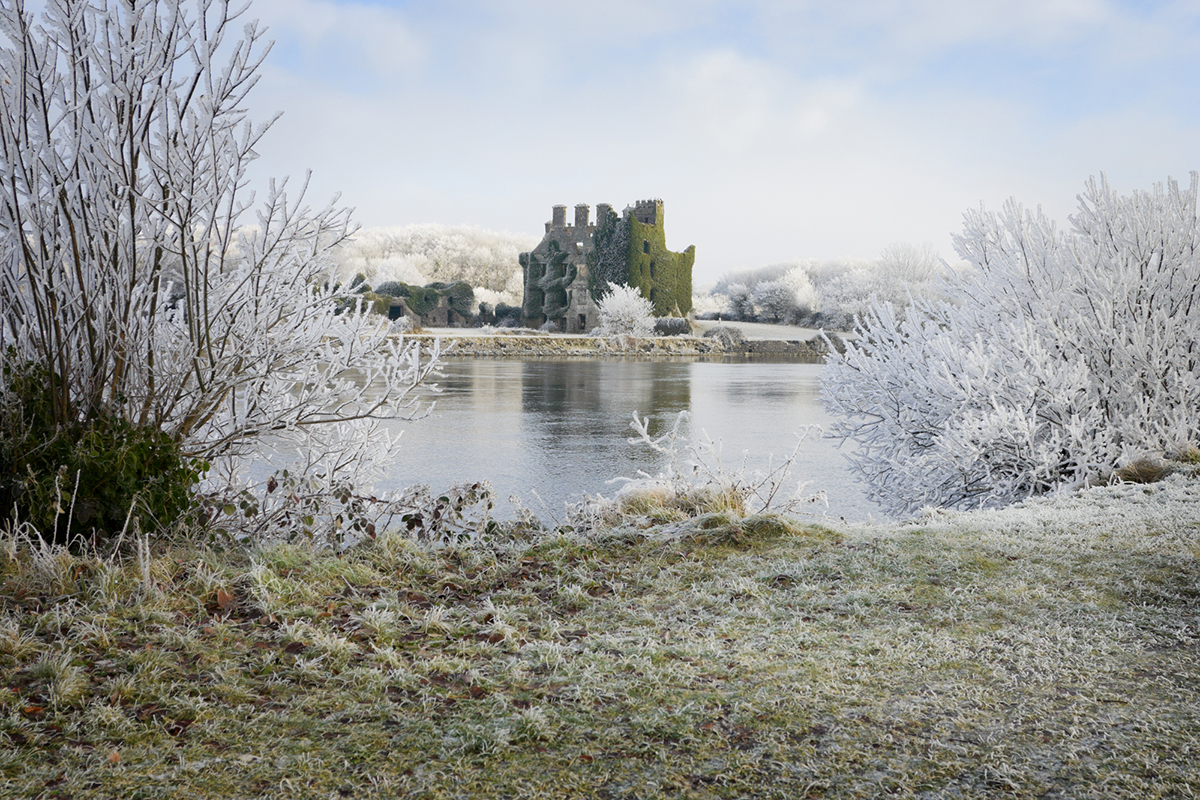
So, when can you experience Ireland’s ellusive snowfall?
It’s unsurprising that winter is the best time.
January has the most snowfall, which makes it the most likely month to see snow in Ireland.
But let’s break it down month by month:
Does It snow in Ireland in November?
November marks the beginning of Ireland’s winter season, but it’s usually not the best time to see snow.
It can happen occasionally in elevated regions like the Wicklow Mountains or County Donegal. But don’t count on it!
Does It snow in Ireland in December?
Yes, it can snow in Ireland in December, especially as the month progresses!
Certain areas, particularly in areas with more altitude, may get a light dusting that sticks around for a day or two.
Does It snow in Ireland in January?
January is your best bet if you’re keen on experiencing a few days of snowfall.
The temperatures generally reach their lowest points, creating conditions conducive to snow, especially in mountainous regions (but please remember that the highest mountain in Ireland is 1,039m – barely anything compared to the Alps!).
Even during this peak month, heavy snowfall is pretty rare. If you’re keen on seeing some snow in the British Isles in January, I’d recommend heading to Scotland, where snowfall is much more common in the highlands.
Does It snow in Ireland in February?
Again, it can, but it doesn’t always.
There’s cold weather, sure, and you might see some snowfall in the higher areas, and there could be the odd snow shower in Dublin – it might even stick around for a day or two.
But it’s by no means guaranteed.
Does It snow in Ireland in March?
Snow can happen in March, but it’s less likely than in February.
Ireland begins a gradual shift towards spring, and the average temperature rises – so it’s very unlikely that your St Patrick’s Day celebrations will be covered in snow!
Where does It snow in Ireland?
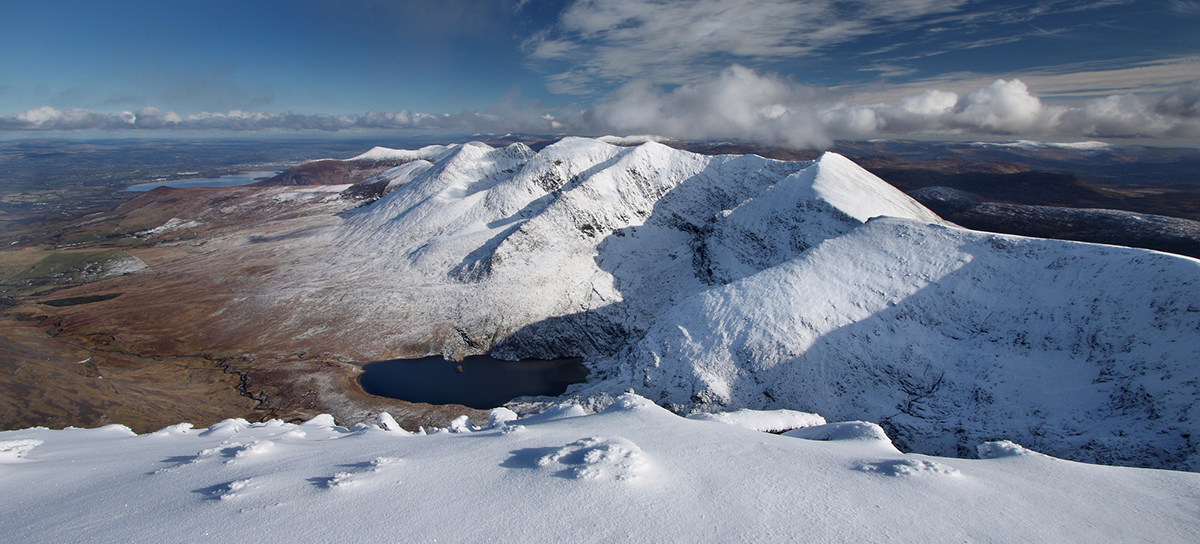
So where are you most likely to have snowfall in Ireland?
Let’s delve into each region:
Northern Ireland
Northern Ireland (which is part of the UK, rather than the Republic of Ireland) does get some snowfall.
The Mourne Mountains, for instance, can have a few days of snow at certain times of the year, with the coldest temperatures being in January.
Northern Ireland is on the same latitude as Scotland, whereas the Southern parts of Ireland are paralell to England and Wales, which explains why it can be colder here.
Western Ireland
Western Ireland, with cities like Galway and Limerick, doesn’t often see snow.
The Atlantic currents keep the temperatures milder, often turning potential snow into rain.
However, some inland areas at higher elevations can see occasional snowfall during peak winter months.
Eastern Ireland
In the East, particularly from Dublin to the Wicklow Mountains, you’ll find a higher likelihood of snow, as it’s more sheltered than the Atlantic sides.
The Wicklow Mountains are one of the most likely areas to see snow in Ireland.
Dublin itself is hit or miss, but when it does snow, the city’s absolutely magical – imagine the crunch of snow as you explore its literary history, perhaps stopping at the Temple Bar to warm up with a pint of Guinness!
Southern Ireland
Down south, snow’s rarer.
Cities like Cork and Waterford have mild temperatures, largely due to the moderating effect of the nearby sea.
When it does snow, it’s typically a fleeting experience, melting away rather quickly!
Central Ireland
Central Ireland, including counties like Offaly and Longford aren’t particularly elevated, but their more inland position can lead to occasional snowfall in cooler years.
Does it snow in Dublin?
Yes, Dublin does see occasional snowfall, mostly between December and February.
However, the snow rarely sticks around due to the city’s milder temperatures.
Does it snow in Belfast?
Yes, Belfast experiences snow, especially in January and February, although it’s never guaranteed.
The snow can sometimes lead to travel disruptions, given its frequency compared to other Irish cities.
Does it snow in Cork?
Not often.
Cork, located in the south of Ireland, experiences milder winters and rarely sees substantial snowfall. If it does snow, it’s usually a light dusting that melts quickly.
Does it snow in Galway?
Yes, but it’s rare.
Galway, on Ireland’s west coast, is more likely to receive rain than snow due to the influence of the Atlantic Ocean.
When it does snow, it typically doesn’t last long.
Why doesn’t it snow much in Ireland?
Snow in Ireland isn’t as common as in many other European countries, but it does snow sometimes.
Several factors contribute to this:
- The ocean and an oceanic climate
- Prevailing winds
- Lack of high-altitude areas
- Latitude
Ireland’s climate is called oceanic, which is characterised by milder winters and a smaller range of temperatures between seasons.
This limits the duration and intensity of cold snaps that are required for sustained snowfall and compares to a continental climate which you’ll find in places like Krakow, Poland (and which explains the snowfall there!).
The west of Ireland borders on to the Atlantic Ocean, which influences its climate (just like it does to the South West peninsula of England, which is where I live!).
The North Atlantic Drift, a warm ocean current and part of the gulf stream makes its way from the warm waters of the Caribbean and flows near the western coast of Ireland.
This current moderates the temperatures and often turns what could be snow into rain!
Because Ireland is surrounded by water, its weather is typically more temperate than other places in Europe – winters are usually milder and summers are usually cooler.
In fact, while it doesn’t snow in England much either, Ireland actually feels this temperate weather slightly more.
Elevation also plays a key role.
Ireland doesn’t have many high-altitude areas – as I mentioned before, while there are mountainous regions like the Wicklow Mountains and the mountains in County Donegal, they aren’t high enough to ensure consistent, heavy snowfall – Ireland’s highest peak is Carrauntoohil at 1,038 m.
This means you’ll usually find snow in these elevated areas, but it’s not guaranteed, and it often melts quickly.
Prevailing winds from the southwest bring moist air, but not necessarily cold air. As a result, Ireland gets precipitation but not always the kind that results in snow.
Latitude factors in as well, particularly with Northern Ireland, which is close to Scotland.
Being further north – closer to the North Pole – means colder temperatures, making snow more likely than in the southern parts of the island. However, it’s not as far north as many snow-prone places in Europe, like Tromsø in Norway.
However, Northern Ireland is still influenced by the milder oceanic climate, keeping it from experiencing heavy snowfall regularly.
This is why it doesn’t get as much snow as some places in North America that are on the same latitude.
Tips for navigating Ireland in the snow
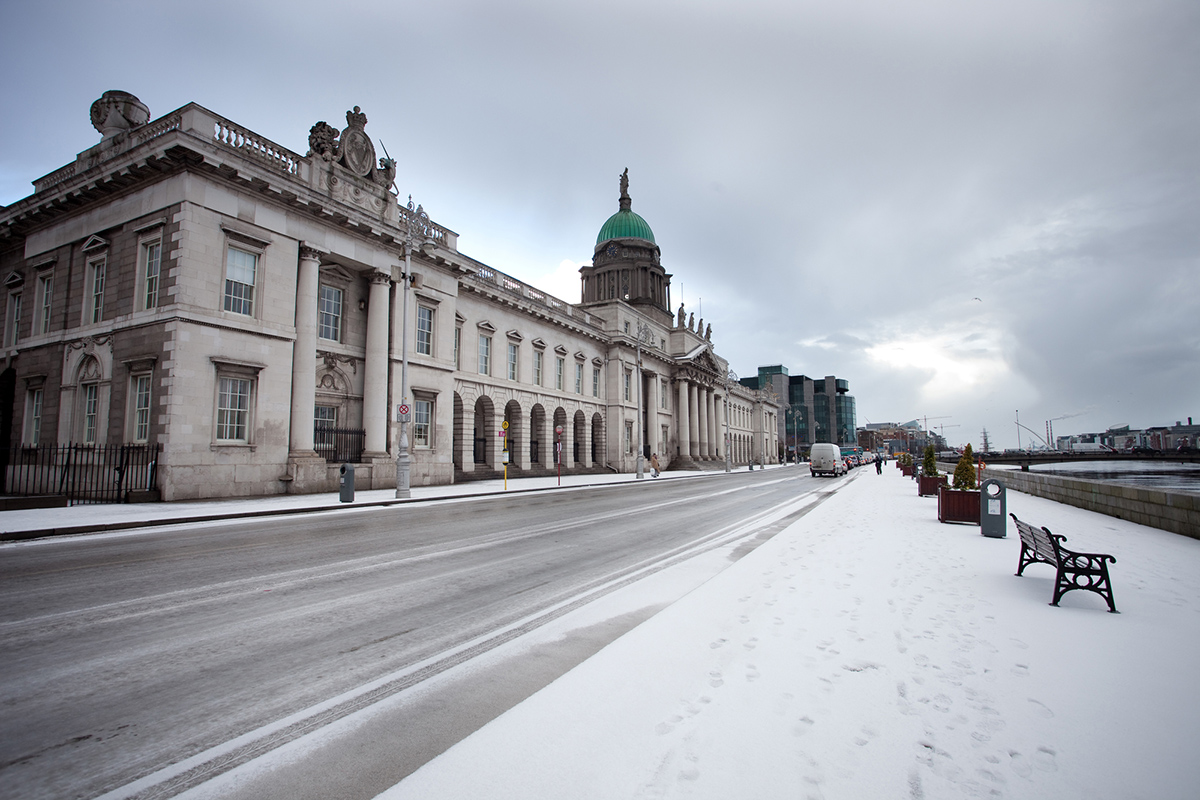
So, you’re in Ireland and it’s snowing. What next?
First, enjoy it! Snow in Ireland doesn’t happen that often.
However, take stock of the following tips to help you enjoy it safely!
Use trusted websites for weather forecasts
For reliable weather forecasts and any weather warnings, you’ll want to bookmark Met Éireann, the Irish Meteorological Service.
Their site offers up-to-date information on weather conditions throughout Ireland.
Another useful resource is the UK Met Office if you find yourself in Northern Ireland.
Wear the right clothes
Winter in Ireland might not be Arctic, but it does get cold, especially if you’re planning on venturing into higher elevations.
Layers are key here: start with thermal or moisture-wicking base layers and build up to a waterproof, wind-resistant outer layer.
Don’t forget waterproof boots, and a hat and gloves are always a good idea!
(If you visit Ireland at any time of year, don’t forget waterproofs. It will rain – but that’s all part of the charm!).
Road conditions
Driving in Ireland when it snows can be challenging, especially on rural roads. Some aren’t shovelled, and, like in England, many people don’t know how to drive properly in the snow!
If snow’s forecasted, I’d recommend avoiding driving if possible. Accidents are much more common in the snow.
If you do have to drive, stick to major roads whenever possible, as these are more likely to be cleared quickly, and make sure that you have food, blankets and water with you in the car in case of breakdown or accidents, as it might take longer to get help in the snow.
Check the Road Safety Authority’s website for real-time road conditions and other safety tips.
Public transport
Irish public transport isn’t the greatest at the best of times – and unfortunately, it can play up in the snow as well!
Keep an eye on official websites like Transport for Ireland to see if there are any disruptions.
Enjoy the surrounding area
Ireland doesn’t usually have prolonged snowfall, so my top tip would be to just enjoy yourself where you are!
If snowfall is heavy, schools and workplaces may be closed – but it’s likely that public spaces will be abuzz with locals enjoying a rare snowy day.
Don’t try to travel if possible – just explore the area you’re in (it’ll take on a new character in the snow!) and enjoy this rare weather event.
When was Ireland’s biggest snowfall?
So, when did it really snow in Ireland?
There have been a few instances when it snowed enough to shut down schools and workplaces and have etched their way into Irish people’s memories!
1982
One of the heaviest snowfalls in Ireland’s recent history took place during the winter of 1982 between January and February.
This period is often referred to as the “Big Snow” of 1982.
During this time, heavy snowfall led to drifts up to several meters high in some areas, severely disrupting daily life across the country.
Northern Ireland and the mountainous regions in the Republic of Ireland were particularly hard-hit, but even flatter areas and coastal regions saw substantial accumulation.
Schools closed, public transport ground to a halt, and many found themselves isolated in their homes.
The snowfall was so heavy that even Dublin Airport shut down!
It also swept across the UK, affecting places like London and Manchester.
Meteorologically speaking, this was due to a combination of cold air masses from the Arctic interacting with moisture-laden systems from the Atlantic.
The resultant heavy snowfall left an indelible mark on the collective memory of those who lived through it. Many residents still compare current winter conditions to the extremes of 1982!
1947
Long before the notable Big Snow of 1982, the winter of 1947 set a record that still stands today.
The storm began on February 23, 1947 and continued well into March.
The fiercest blizzard within this period struck on February 25th, enduring for nearly fifty consecutive hours.
This event remains the single greatest snowfall in Ireland’s recorded history.
What made the Big Snow of 1947 so extraordinary were the extreme conditions it brought.
Temperatures plunged to a bone-chilling -15°C.
Winds were so robust that they created snowdrifts reaching up to 6 meters high, effectively barricading roads and rendering travel an impossibility.
Life in Dublin, Ireland’s capital, was stopped.
All forms of transport ceased operations, and people found themselves confined to their homes.
In the countryside, farmers faced immense difficulties as they couldn’t tend to their livestock, leading to the unfortunate demise of many animals.
Essential utilities were also disrupted: power lines succumbed to the weight of the snow and subsequent ice, and water pipes froze solid, leaving entire communities without electricity or water.
How cold are the winters in Ireland?
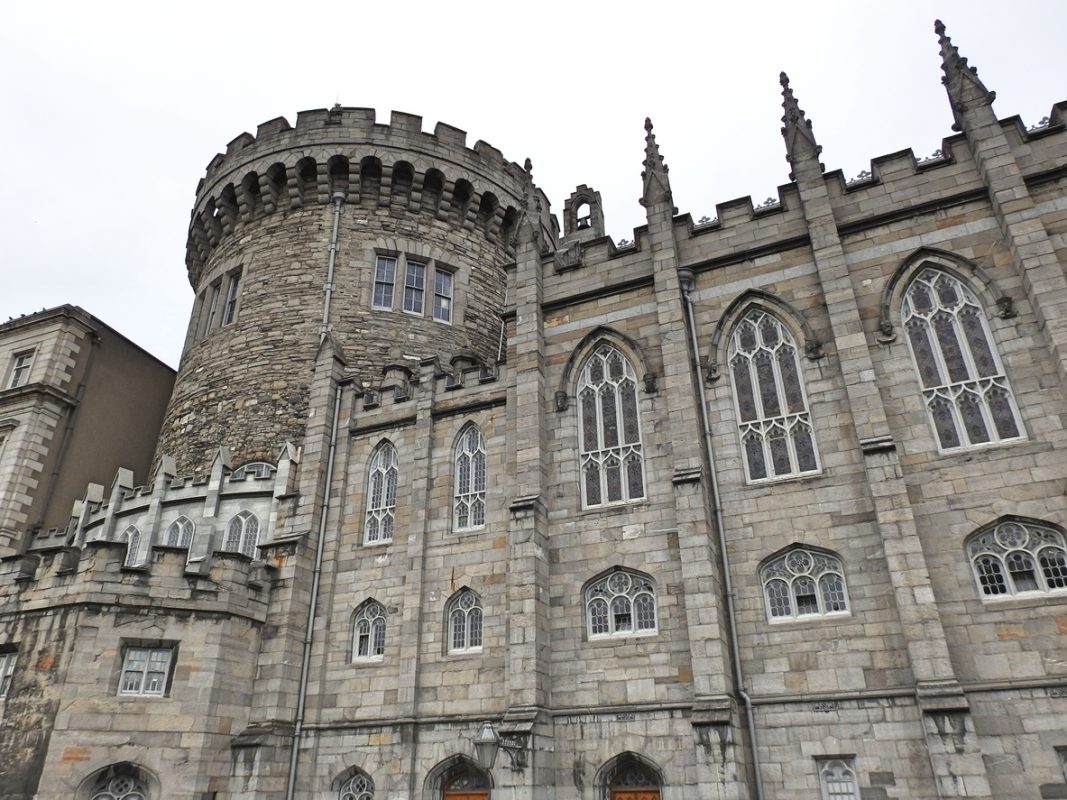
So, if it doesn’t snow much, just how cold is the winter weather usually in Ireland?
Winters in Ireland are generally milder than in many other countries at similar latitudes.
However, don’t let the term “mild” deceive you into thinking you’ll escape the cold altogether.
Average temperatures during winter range from 4°C to 8°C (39°F to 46°F), but don’t be surprised if you encounter colder snaps, especially during the night or in elevated areas.
In Northern Ireland, temperatures can be a bit chillier due to its higher latitude.
It’s not uncommon to experience sub-zero temperatures, particularly at night and in inland.
The western and southern regions, influenced by the Atlantic Ocean, tend to be a bit milder but also wetter.
If you’re headed to Dublin and the eastern regions, expect slightly drier conditions, but temperatures can dip due to less influence from the Atlantic currents.
Take a look at the following table for the weather in Dublin in the winter months. But do bear in mind that other places in Ireland can be colder!
| Month | Average High | Average Low | Days of Rain |
|---|---|---|---|
| November | 10°C (50°F) | 4°C (39.2°F) | 11 days |
| December | 9°C (48.2°F) | 3°C (37.4°F) | 12 days |
| January | 8°C (46.4°F) | 2°C (35.6°F) | 13 days |
| February | 8°C (46.4°F) | 2°C (35.6°F) | 10 days |
| March | 10°C (50°F) | 3°C (37.4°F) | 11 days |
Packing for Ireland in winter
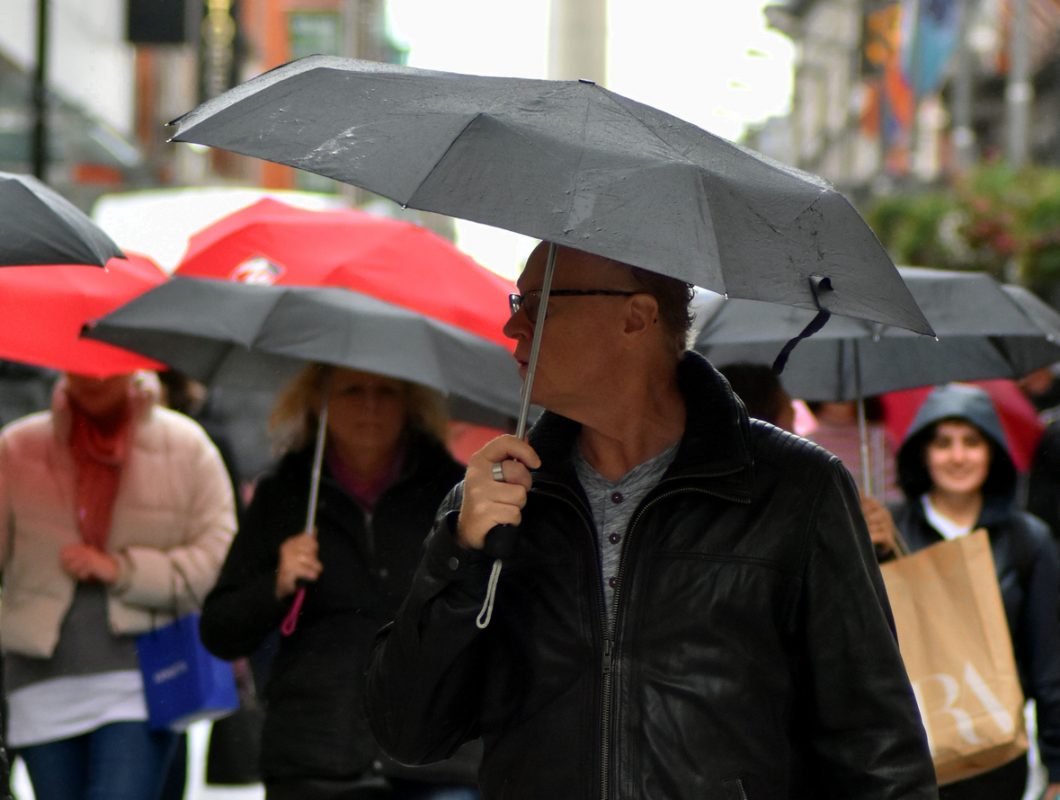
What does this mean for you as a traveller? Pack wisely.
Layering is your friend.
A good waterproof outer layer is essential, especially given the likelihood of rain (both in the winter and summer months!).
Underneath, go for breathable but insulating materials like wool or fleece. Don’t skimp on a good pair of boots, either.
Opt for something water-resistant with a good grip, as you might encounter slippery conditions, even if snowfall is rare.
While the overall temperature ranges may not seem extreme, the dampness of an Irish winter can make it feel colder than the thermometer suggests!
Wind chill can also be a factor, particularly in coastal regions and open landscapes.
A windproof layer can significantly improve your comfort during outdoor activities or sightseeing.
Can you ski in Ireland?
Erm… yes and no!
If you’re looking for Alpine-style ski resorts with a natural blanket of snow, Ireland isn’t your destination.
The country doesn’t have the elevation or the climate to support traditional downhill skiing on natural slopes – it has wet weather rather than snowy weather!
What Ireland does offer, however, are artificial ski slopes. These are generally frequented by ski-happy locals, but of course any tourists are welcome too!
The Ski Club of Ireland operates a dry slope in Kilternan, County Dublin.
While it may not give you the thrill of whizzing down a mountain with fresh snow underfoot, it showcases a controlled environment where you can practice your skills.
These artificial slopes are designed to simulate the friction of snow, and they can be a fantastic place to learn the basics or refine your technique!
Is winter a good time to visit Ireland?

So, all things considered (including the chance of snow!), is winter a good time to visit Ireland?
Unlike some European countries where winter is synonymous with heavy snowfall and ski resorts, Ireland offers a different kind of winter experience.
The weather in winter is milder, and you’re more likely to encounter rain than snow.
That said, winter brings fewer tourists, so iconic spots like the Cliffs of Moher or the Ring of Kerry are less crowded.
Ireland’s pubs remain ever-inviting, offering a cozy respite from the chilly weather.
Winter festivals and events, especially around Christmas, provide a unique look into Irish traditions.
And some coastal areas are ideal for winter surfing, courtesy of the Atlantic swells (usually only for the experienced!).
If you’re into photography, the winter light in Ireland is soft and diffused, providing excellent conditions for capturing the landscape’s subdued winter tones.
Keep in mind, though, that hours of daylight are limited, with the sun setting as early as 4:30 PM in December.
Let’s break it down month by month:
- December: Experience Ireland’s Christmas markets and festivities.
- January: The quietest tourist month and coldest month in Ireland. Ideal if you want to avoid crowds but still engage with the local culture.
- February: Increasing daylight and the first hints of spring make outdoor activities more accessible.
- March: St. Patrick’s Day celebrations are a must-experience, and late March can offer some surprisingly mild days.
FAQs about snow in Ireland
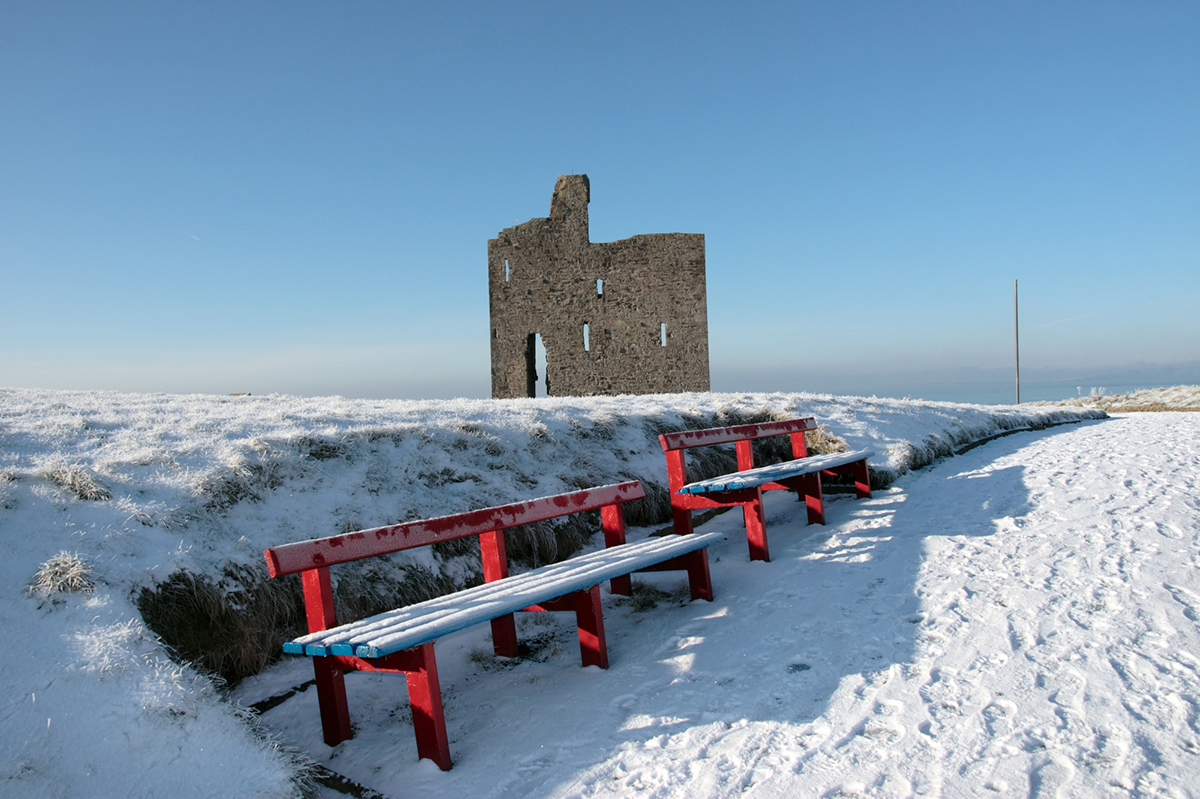
Here are some answers to frequently asked questions about snowfall in Ireland!
Does Ireland have snow?
Yes, Ireland does experience snowfall, although it’s typically not very heavy or long-lasting.
The snow rarely sticks around for extended periods due to the country’s generally milder temperatures.
Does Dublin Ireland get snow?
Dublin does receive some snowfall, particularly during the winter months.
However, accumulation is usually minimal, and snow tends to melt quickly due to the city’s coastal location.
Why is Ireland usually snow-free?
Ireland’s relatively mild winters are influenced by the North Atlantic Current and Gulf Stream.
This oceanic factor, coupled with the country’s lower elevations, leads to less frequent and less severe snowfall compared to other European countries at similar latitudes.
Which part of Ireland has snow?
Elevated areas, such as the Wicklow Mountains near Dublin, are more likely to see snow.
Northern Ireland also tends to get some snow due to its higher latitude.
What part of Ireland gets snow?
Generally, Northern Ireland and elevated areas in the Republic of Ireland, like the Wicklow Mountains, are more likely to experience snowfall.
Will it snow at Christmas in Ireland?
Snowfall on Christmas in Ireland is relatively rare but not impossible.
Generally, coastal areas see less snow, while elevated regions may have a higher chance.
Does it snow in Dublin at Christmas?
Snowfall in Dublin around Christmas is quite rare.
If it does happen, it’s usually not enough to cause significant accumulation.
Does Galway ever snow?
Galway, being on the western coast, is influenced by the Atlantic Ocean, which makes snowfall relatively rare and usually very light.
Does it snow in Belfast, Ireland?
Yes, Belfast in Northern Ireland does see some snow, especially when compared to cities in the Republic of Ireland.
The probability of snow is higher due to its northern latitude, but it’s still not high when compared to places in Europe like Switzerland!
Is Ireland colder than England?
Ireland and England have relatively similar climates, but Ireland tends to be a bit milder in winter due to the influence of the Atlantic Ocean – it’s generally cooler in summer, however.
Does England and Ireland get snow?
Both England and Ireland experience snowfall, although it’s generally more frequent and intense in England, particularly in northern regions and higher elevations.
Does it snow more in England or Ireland?
England generally experiences more snowfall than Ireland.
This is due to a combination of factors including higher elevations and different weather patterns influenced by latitude and proximity to continental Europe.
Are you going to try to catch a glimpse of Ireland’s snow?
So, while Ireland’s certainly not the place to go for guaranteed snowfall in the winter, you might spot a little bit of it while you’re out exploring!
It should by no means be expected, but it could happen – but if it doesn’t, Ireland is still well worth exploring in winter!
